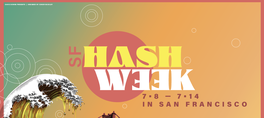Fox’s paintings are siren songs that live in a sphere somewhere between the subconscious and the magical. Her figures are often pale, ghostly, smoke & mirror, more shape than body. The world they move through is one that’s at once mundane—an office, a bus stop, a street with trash cans—and surreal: it’s as if Fox is squeezing the real out of reality, and what’s left is an etherealized version of strange, dream-like beauty.
Each of her paintings tells us a story. Religious themes like annunciation or resurrection are next to images of beauty and sexuality, power dynamics and vulnerability, Botticelli and Beyonce. There is something puzzling about the narratives though, as if they were unfinished, unresolved, dots in need of connecting, and it’s this enigmatic quality that pulls the viewer in. It’s hard to look away from Fox’s paintings.
The mystery isn’t just a result of missing clues; rather, it’s at the core of Fox’s universe which is center-less, painted from a view from nowhere. The people in her paintings are neither individuals, nor archetypes. They don’t carry messages or proclaim ideologies. And yet, each of Fox’s figures carries an emotionality that is clear and so strong that it’s nearly palpable. Raccoon ladies look at us startled but completely unabashed; a lonely Venus defiantly affirms her beauty in the parking lot of a laundromat; and human Lemurs play in a tree with the agility and innocence of monkeys, and the sensuousness and calculated awareness of dance performers.
Often, Fox says, her paintings begin with a vision of a visually striking image, and the significance of that image only reveals itself after the fact. They stem from a realm in which the visual and the verbal are not separated yet.
Fox’s fluency in the language of pop culture is visible in her use of candy-colors and neo-naïve compositions. Yet, her artistic roots go back to artists such as Douglas Bourgeois, the late Chuck Crosby, or Kerry James Marshall. Fox uses smooth surfaces onto which she layers thin coats of color (usually black and white) to create an even denser surface to work off. This underlying opaqueness forms an extraordinary contrast to the ethereal pastel colors and the frequent plays with light and transparency.
The men in her paintings often appear faceless and stiff; the women, by contrast, exude sensuality through their evocative body language, exaggerated forms, and dreamy eyes. They are distributed across the canvas with a painterly sense of rhythm rather than realism, and set against an abstract background that conveys the dominance of feeling-tone over verisimilitude. Fox’s style is not easily classified but may cautiously be characterized as magical pop-art.
Elizabeth Fox was born in Orlando, Florida. She attended the Ringling School of Art in Sarasota before she moved to New Orleans and eventually to Maine. She has exhibited her work in New York City, New Orleans, San Francisco, Miami, Washington DC, Houston, the Netherlands and at the Center for Maine Contemporary Art (CMCA).
show less
Each of her paintings tells us a story. Religious themes like annunciation or resurrection are next to images of beauty and sexuality, power dynamics and vulnerability, Botticelli and Beyonce. There is something puzzling about the narratives though, as if they were unfinished, unresolved, dots in need of connecting, and it’s this enigmatic quality that pulls the viewer in. It’s hard to look away from Fox’s paintings.
The mystery isn’t just a result of missing clues; rather, it’s at the core of Fox’s universe which is center-less, painted from a view from nowhere. The people in her paintings are neither individuals, nor archetypes. They don’t carry messages or proclaim ideologies. And yet, each of Fox’s figures carries an emotionality that is clear and so strong that it’s nearly palpable. Raccoon ladies look at us startled but completely unabashed; a lonely Venus defiantly affirms her beauty in the parking lot of a laundromat; and human Lemurs play in a tree with the agility and innocence of monkeys, and the sensuousness and calculated awareness of dance performers.
Often, Fox says, her paintings begin with a vision of a visually striking image, and the significance of that image only reveals itself after the fact. They stem from a realm in which the visual and the verbal are not separated yet.
Fox’s fluency in the language of pop culture is visible in her use of candy-colors and neo-naïve compositions. Yet, her artistic roots go back to artists such as Douglas Bourgeois, the late Chuck Crosby, or Kerry James Marshall. Fox uses smooth surfaces onto which she layers thin coats of color (usually black and white) to create an even denser surface to work off. This underlying opaqueness forms an extraordinary contrast to the ethereal pastel colors and the frequent plays with light and transparency.
The men in her paintings often appear faceless and stiff; the women, by contrast, exude sensuality through their evocative body language, exaggerated forms, and dreamy eyes. They are distributed across the canvas with a painterly sense of rhythm rather than realism, and set against an abstract background that conveys the dominance of feeling-tone over verisimilitude. Fox’s style is not easily classified but may cautiously be characterized as magical pop-art.
Elizabeth Fox was born in Orlando, Florida. She attended the Ringling School of Art in Sarasota before she moved to New Orleans and eventually to Maine. She has exhibited her work in New York City, New Orleans, San Francisco, Miami, Washington DC, Houston, the Netherlands and at the Center for Maine Contemporary Art (CMCA).
Fox’s paintings are siren songs that live in a sphere somewhere between the subconscious and the magical. Her figures are often pale, ghostly, smoke & mirror, more shape than body. The world they move through is one that’s at once mundane—an office, a bus stop, a street with trash cans—and surreal: it’s as if Fox is squeezing the real out of reality, and what’s left is an etherealized version of strange, dream-like beauty.
Each of her paintings tells us a story. Religious themes like annunciation or resurrection are next to images of beauty and sexuality, power dynamics and vulnerability, Botticelli and Beyonce. There is something puzzling about the narratives though, as if they were unfinished, unresolved, dots in need of connecting, and it’s this enigmatic quality that pulls the viewer in. It’s hard to look away from Fox’s paintings.
The mystery isn’t just a result of missing clues; rather, it’s at the core of Fox’s universe which is center-less, painted from a view from nowhere. The people in her paintings are neither individuals, nor archetypes. They don’t carry messages or proclaim ideologies. And yet, each of Fox’s figures carries an emotionality that is clear and so strong that it’s nearly palpable. Raccoon ladies look at us startled but completely unabashed; a lonely Venus defiantly affirms her beauty in the parking lot of a laundromat; and human Lemurs play in a tree with the agility and innocence of monkeys, and the sensuousness and calculated awareness of dance performers.
Often, Fox says, her paintings begin with a vision of a visually striking image, and the significance of that image only reveals itself after the fact. They stem from a realm in which the visual and the verbal are not separated yet.
Fox’s fluency in the language of pop culture is visible in her use of candy-colors and neo-naïve compositions. Yet, her artistic roots go back to artists such as Douglas Bourgeois, the late Chuck Crosby, or Kerry James Marshall. Fox uses smooth surfaces onto which she layers thin coats of color (usually black and white) to create an even denser surface to work off. This underlying opaqueness forms an extraordinary contrast to the ethereal pastel colors and the frequent plays with light and transparency.
The men in her paintings often appear faceless and stiff; the women, by contrast, exude sensuality through their evocative body language, exaggerated forms, and dreamy eyes. They are distributed across the canvas with a painterly sense of rhythm rather than realism, and set against an abstract background that conveys the dominance of feeling-tone over verisimilitude. Fox’s style is not easily classified but may cautiously be characterized as magical pop-art.
Elizabeth Fox was born in Orlando, Florida. She attended the Ringling School of Art in Sarasota before she moved to New Orleans and eventually to Maine. She has exhibited her work in New York City, New Orleans, San Francisco, Miami, Washington DC, Houston, the Netherlands and at the Center for Maine Contemporary Art (CMCA).
read more
Each of her paintings tells us a story. Religious themes like annunciation or resurrection are next to images of beauty and sexuality, power dynamics and vulnerability, Botticelli and Beyonce. There is something puzzling about the narratives though, as if they were unfinished, unresolved, dots in need of connecting, and it’s this enigmatic quality that pulls the viewer in. It’s hard to look away from Fox’s paintings.
The mystery isn’t just a result of missing clues; rather, it’s at the core of Fox’s universe which is center-less, painted from a view from nowhere. The people in her paintings are neither individuals, nor archetypes. They don’t carry messages or proclaim ideologies. And yet, each of Fox’s figures carries an emotionality that is clear and so strong that it’s nearly palpable. Raccoon ladies look at us startled but completely unabashed; a lonely Venus defiantly affirms her beauty in the parking lot of a laundromat; and human Lemurs play in a tree with the agility and innocence of monkeys, and the sensuousness and calculated awareness of dance performers.
Often, Fox says, her paintings begin with a vision of a visually striking image, and the significance of that image only reveals itself after the fact. They stem from a realm in which the visual and the verbal are not separated yet.
Fox’s fluency in the language of pop culture is visible in her use of candy-colors and neo-naïve compositions. Yet, her artistic roots go back to artists such as Douglas Bourgeois, the late Chuck Crosby, or Kerry James Marshall. Fox uses smooth surfaces onto which she layers thin coats of color (usually black and white) to create an even denser surface to work off. This underlying opaqueness forms an extraordinary contrast to the ethereal pastel colors and the frequent plays with light and transparency.
The men in her paintings often appear faceless and stiff; the women, by contrast, exude sensuality through their evocative body language, exaggerated forms, and dreamy eyes. They are distributed across the canvas with a painterly sense of rhythm rather than realism, and set against an abstract background that conveys the dominance of feeling-tone over verisimilitude. Fox’s style is not easily classified but may cautiously be characterized as magical pop-art.
Elizabeth Fox was born in Orlando, Florida. She attended the Ringling School of Art in Sarasota before she moved to New Orleans and eventually to Maine. She has exhibited her work in New York City, New Orleans, San Francisco, Miami, Washington DC, Houston, the Netherlands and at the Center for Maine Contemporary Art (CMCA).
show less
Date/Times:
Dolby Chadwick Gallery
5 Upcoming Events
210 Post Street, San Francisco, CA 94108
The Best Events
Every Week in Your Inbox
From Our Sponsors
UPCOMING EVENTS
Great suggestion! We'll be in touch.
Event reviewed successfully.









